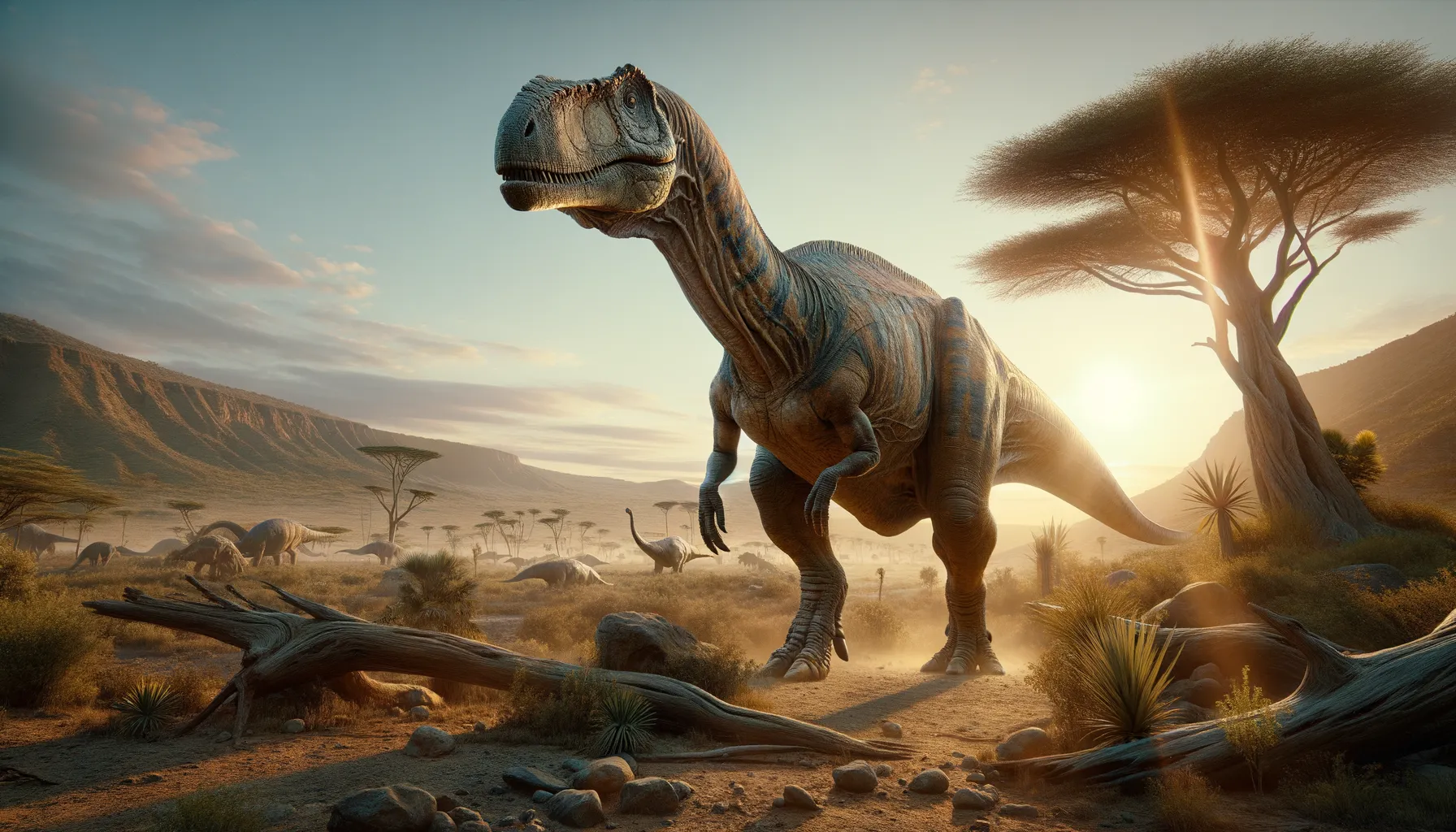
Shingopana
Unveiling ancient giants of Gondwana.
Period
Cretaceous
Length
Around 26 feet long.
Height
Roughly 10 feet tall at the shoulders.
Weight
Approximately 5 tons.
Shingopana was a titanosaurian dinosaur from the Late Cretaceous period. It was a large, long-necked herbivore with a relatively short neck compared to other sauropods. Discovered in Tanzania, it provides important insights into the diversity and distribution of titanosaurs in Gondwana. Its unique features include differences in its vertebrae and skull, distinguishing it from relatives in South America.
Diet
Shingopana was an herbivore, primarily feeding on plants. Its long neck allowed it to reach leaves high up in trees, as well as to graze low vegetation. This varied diet would have supported its massive size and energy needs.
Hunting
As an herbivore, Shingopana did not hunt other animals. Instead, it foraged for various types of vegetation. It likely spent a considerable amount of time each day searching for food to sustain its large body.
Environmental challenges
Shingopana lived in an era with significant volcanic activity, which could have altered habitats. Changing sea levels may have influenced the availability of fertile landscapes. Competition for food with other herbivores might have been a challenge, requiring efficient use of resources. It had to navigate a landscape possibly inhabited by predators like theropods.
Speed
Likely slow due to its massive size.
Lifespan
Estimated around 70-100 years.
First discovery
Discovered in Tanzania by a team of paleontologists.
Fun Facts
- Shingopana was discovered in Tanzania, making it one of the few dinosaur fossils known from Africa.
- Its name means 'wide neck' in Swahili, reflecting its unique neck shape.
- Shingopana was a titanosaur, a group of long-necked, plant-eating dinosaurs.
- The fossil of Shingopana was first found in the 2000s but wasn't fully studied and named until 2017.
- It lived during the Late Cretaceous period, around 100 million years ago.
- Shingopana is estimated to have been about the size of a school bus.
- The discovery of Shingopana helps scientists understand the diversity of dinosaurs that lived in Gondwana, a supercontinent in the southern hemisphere.
Growth and Development
Shingopana likely experienced rapid growth during its juvenile stages to help avoid predation. As it matured, its growth rate may have slowed down. Its large size suggests it could live in herds for protection during its vulnerable young life. The development of its distinct features likely played a role in its adaptation to local environments.
Habitat
Shingopana inhabited lush, forested regions with plenty of vegetation to consume. Its environment would have included various river systems, which supported diverse plant life. Such habitats provided necessary resources for its survival. These regions were part of the ancient supercontinent Gondwana.
Interaction with other species
Shingopana likely coexisted with other herbivorous dinosaurs, sharing feeding grounds. It may have had to defend itself against predators, though its large size was a good deterrent. Its interactions were mostly centered around competition and avoidance. The dynamic ecosystem would have included smaller creatures that Shingopana inadvertently influenced.
Natural lifespan
Shingopana likely lived a long life, potentially over 70 years.
Reproduction
Like other sauropods, Shingopana laid eggs, likely in communal nesting grounds. The young would have been relatively small at birth, requiring rapid growth for survival. Its reproductive strategy relied on producing numerous offspring to ensure that some reached maturity. Parental care was minimal, leaving juveniles to fend for themselves.
Social behaviour
Shingopana might have lived in herds, which provided safety in numbers from predators. Such social structures would also facilitate finding food and navigating the environment. Communication within these groups might have included vocalizations and body language. The dinosaur's social behavior would have been essential for the survival and growth of its young.
Fossil locations
The first Shingopana fossils were found in the southern part of Tanzania. Its discovery provides evidence of their distribution in Africa. The location of these fossils is significant for understanding sauropod evolution. These finds help piece together the puzzle of dinosaur dispersal across ancient continents.
